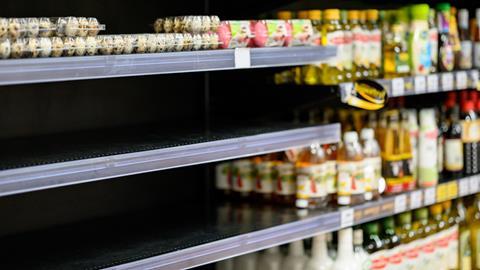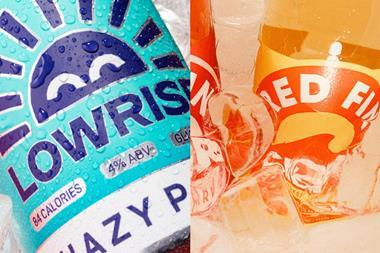![Guide to SMEs_Article image_long[3]](https://dmrqkbkq8el9i.cloudfront.net/Pictures/480xany/2/3/6/183236_guidetosmes_articleimage_long3_307021.jpg)
This is part of our free series, Guide for SMEs, which aims to provide practical, actionable advice for small food and drink brands affected by the coronavirus crisis
We know that the coronavirus has changed the world forever, so it’s perhaps unsurprising that it has also sparked dramatic changes to what’s on shelf in the supermarkets. As a result of the nation rushing out to panic-buy essentials, buyers have had to rethink their ranges and make drastic changes to ensure supply. As a result, many small suppliers are facing the loss of their supermarket listings.
For some insight into what to do if you think your brand is vulnerable, we spoke to Julie Palmer, regional managing partner at corporate recovery specialists Begbies Traynor and Theadora Alexander, co founder of challenger brand community Young Foodies.
What impact does a sudden delisting have on a small food and drink brand?
“The impact has the potential to be catastrophic.” says Alexander. “Small food and drink brands don’t sit on large reserves of cash, nor can they afford large amounts of product wastage. If they have produced stock they were expecting to sell but don’t have the channels to sell them through, the resulting lack of liquidity could be severely detrimental.”
Delistings: have supermarket product ranges shrunk for good?
Adds Palmer: “It is not just the lost turnover that can cause a real problem for the supplier. It’s also the investment in the requisite workforce and the capex of machinery and tooling.”
What actions can brands take immediately after a delisting?
“This depends on a number of factors,” says Alexander. “If a delisting comes from a major retailer without reasonable notice, it may be against GSCOP guidelines and the brand will have the right to challenge the decision. I would encourage brands to check this immediately.
“However with smaller, independent retailers, the reality is that there’s not much brands can do. In his case their primary focus should be to recover the income through alternative routes as quickly as possible and try to clear the stock they thought they were going to sell.”
When thinking longer term, what should the next steps be?
“Diversification diversification and more diversification,” says Palmer.
“Supermarkets can be demanding customers in terms of delivery and pricing but they do offer volume. The demands they place can also make it difficult for suppliers to build a diverse customer base, but to do so is the only way to be able to withstand what will be a massive reduction in turnover if the brand is delisted.”
Brands shouldn’t shy away from discussing the reasons behind the delisting with the retailer, according to Alexander.
Guide for SMEs: How to nail your CBILS application in eight steps
“Before you can move forward you must face the hard truth of what happened, whether it was due to poor sales, an inferior product or any other factor caused by the brand itself,” says Alexander.
“Similarly, it might have been as a result of something completely out of the brand’s control and this changes the landscape entirely. If it is the former, it would be a strong signal for the brand to undertake strategic self-reflection and re-evaluate their proposition for the longer term. If it is the latter, sit down again with the buyer to understand how the climatic influences need to change in order to get the brand back on the shelf.”
Is a delisting always a sign that a brand will go under?
No.
”A big question is the level of dependency of the brand on that retailer,” said Alexander.
“If that customer represents 90% of the brand’s sales and they experienced a sudden delisting, it would be a high-risk situation for survival but even then there are still ways to build new routes to market if this can be done quickly. But if the brand has diversified its customer base and the percentage of dependency on the delisting retailer is more balanced against other retailers, or they have other SKUs still in play, they could weather the storm.”
And consumer trends emerging from the pandemic don’t necessarily spell disaster either, according to Palmer.
“On the one hand, the pandemic shows customers are relying more on traditional comfort brands but on the other hand, there’s greater willingness to try new products because people are cooking at home more.”
Can brands get relisted? What’s the best way to start that process?
“Absolutely they can,” says Alexander.
“If the reasons for the delisting were within the control of the brand, they could come back to the buyer and demonstrate that they have taken the feedback on board, made crucial changes and show with confidence that they have resolved the problem.
“For reasons outside their control, they should aim to maintain a good relationship with the buyer, reignite conversations and work together to monitor when favourable climatic conditions are on the horizon so that the brand is front of mind for relisting.”
Palmer says a delisting creates the right opportunity for brands to diversify.
“Keep an ongoing dialogue with the supermarkets but also explore other customer bases. Don’t be held to ransom or have your margins squeezed even further to secure a relisting.”




















No comments yet